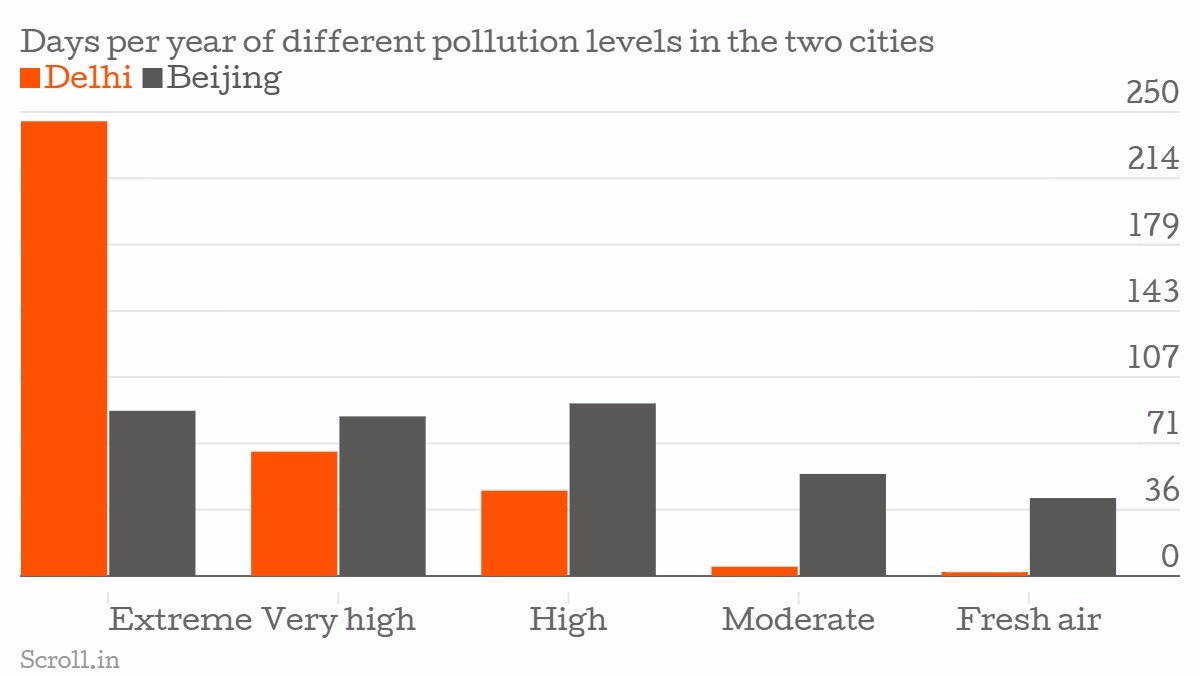Some claim that the city appears to have India’s most polluted air because of its superior reporting systems – Delhi has the highest number of monitoring stations for any city in the country, which collect data from various parts of the capital at regular intervals. The implication is that the national capital has been deemed to be the most polluted city in India only because other places don't know quite how bad their air actually is.
Concerted efforts
In neighbouring China, local authorities have been under scrutiny for tampering with air quality data to match national standards, even as the country’s government has sought to put an end to the practice through stricter audits. However, as many studies have shown, the practice continues.
For its part, the Chinese government has taken note of capital Beijing’s poisonous air. On Monday, it issued a red alert for the first time over high pollution levels in the city. Schools and colleges without suitable air purifying systems were advised to remain shut for the duration of the alert. In addition, half the private vehicles were taken off Beijing’s streets in keeping with the odd-even number plate policy.
The Arvind Kejriwal government in Delhi has also woken up to the dangers of worsening air quality. It has introduced a a slew of measures to contain the problem, including emulating Beijing’s odd-even vehicle policy. However, the government has yet to issue a formal public warning on the issue or help citizens understand the full extent of the capital’s air pollution problem.
Intensity of the problem
While both Beijing and Delhi have reported “extremely high” pollution levels at various points in the recent past, a closer look at pollution throughout the year – not just in winter when smog worsens the situation – could provide a more accurate picture.
Plume, a start-up in Paris, collects and makes public air quality data from monitoring stations around the world. It analyses this data and publishes its own air quality index, normalising data from different cities and taking into account each country’s air quality reporting system. This makes it easy to compare pollution levels of two cities.
For example, the Plume app pegged Delhi’s air quality index at 407 on Tuesday afternoon, much higher than Beijing’s index of 273. This serves as an indicator of the concentration of the main pollutants such as particulate matter in the air.
The app categorises the pollution levels in various cities under five categories, ranging from fresh air (perfect for outdoor activities) to extreme pollution (which poses a health hazard to the general public). Thus, it is the daily intensity that determines the severity of the problem – this is where Delhi lags way behind Beijing.

According to the data, Delhi only sees two days of fresh air each year on average, while Beijing has 42 such days. Extreme pollution levels are recorded in Delhi for eight months a year as opposed to three months for Beijing.
As the chart shows, it is clear that Delhi’s pollution levels are consistently worse than Beijing for a substantial part of the year. Also, the Chinese capital’s pollution level are notably higher during smog in winter – but still nowhere close to the levels in Delhi.










